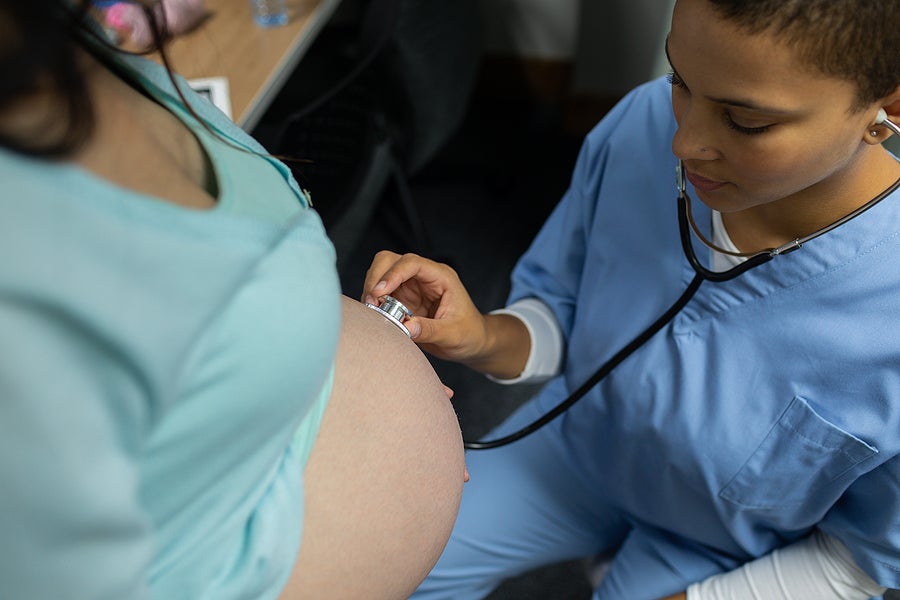By: Elisabeth Wright Burak, Kay Johnson, and Tanesha Mondestin
In 2022, the maternal mortality rate for 2022 decreased to 22.3 deaths per 100,000 live births, compared with a rate of 32.9 in 2022. Black and Indigenous mothers have maternal mortality rates much higher than other racial/ethnic groups. And beyond the narrower category of maternal mortality rates (i.e., during pregnancy and up to 42 days following birth), the category of pregnancy-related mortality includes deaths during and up to a year after pregnancy from associated causes. The six most frequent causes of pregnancy-related death are mental health, cardiovascular, infection, hemorrhage, embolism (clots), and hypertension. Suicide and homicide are also preventable causes of pregnancy-related mortality. Studies have shown that more than 80% of pregnancy-related deaths are preventable.
Addressing the nation’s worsening maternal health crisis will require structural changes in a broad range of areas. While Medicaid is a critical player in maternal health and infant health, many other systems outside of Medicaid support broader efforts to grow and diversify the perinatal workforce, boost health care quality and build a more robust data infrastructure to better track and understand the full magnitude of this crisis.
In recent years, congressional appropriations bills and the President’s budget proposals have included new and increased funding for programs designed to reduce maternal mortality and improve maternal and infant health. (To see a table with trend click here.) Our companion blog featured legislative proposals of the 118th Congress, including the collection of bills under the Black Maternal Health Momnibus not yet enacted into law. At the same time, however, in recent years Congress has made investments in programs and initiatives designed to fulfill some of the purposes of Momnibus provisions. For example, the Bipartisan Consolidated Appropriates Act and Further Consolidated Appropriations Act for Fiscal Year 2024 substantially increased funds for various programs. As noted by Representative Underwood: “For the fifth year in a row, the Black Maternal Health Caucus secured significant federal resources to address our maternal health crisis and save moms’ lives… I’m pleased that we reached bipartisan agreement to fund evidence-based programs to … directly address the drivers of maternal mortality and morbidity.”
This year, lawmakers still need to agree on the full FY2025 budget, as the short-term continuous resolution currently funding the government will expire December 20, 2024. Unfortunately, the FY2025 appropriations process thus far has fallen short of securing funding for key programs designed to improve maternal and infant health as detailed in this table. For example, the House appropriations bill seeks to zero out funding for the Healthy Start program, which has a long track record of improving outcomes for families. While the ultimate status of the House and Senate Labor, Health and Human Services appropriations bills for FY2025 is not known, the 118th Congress still has an opportunity to continue and increase maternal and infant health investments from FY24 levels. Medicaid can’t do its job without the support of the community-based, workforce, and infrastructure investments across the full Department of Health and Human Services.
Kay Johnson has been a leader in health policy for women, children, and families for 40 years, focusing on Medicaid and MCH policy at the federal and state levels since 1984 and advising more than 45 state health and/or Medicaid agencies. Her work on this analysis of federal maternal health policy was supported by the David and Lucile Packard Foundation.


